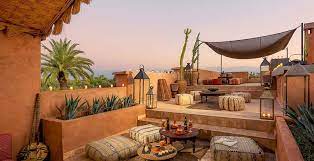An architectural project can’t be done without a pre analysis of THE SPACE, which is a very important concept in architecture, because it is the key to everything. The best we analyze the space choosen for the project, the best the project will be a success. The space at his turn has very spesific characteristics that we will be devlopping in this article.

1- THE PLACE:
–CONTRAST: The relation with the place is of juxtaposition or abstraction. It either domination of the architecture or it’s aliens to it.

CAMOUFLAGE: The relation of the building with the place is of extreme integration: mimesis.

ORGANICISM: is a nod to the place and integration is done by reinterpreting its elements. It shows sensibility towards the place.

-CONTEXTUALISM: It has to do with the meaning expressed by the building. The relationship with the place is justifiable.

SAN SEBASTIAN, SPAIN Auditorium
SPACE:
We can assimilate the concept of space more or less with the following statements advanced by the most famous architects in the world;
“The internal space, that space that (…) cannot be completely represented in any
form, neither learned nor lived, but by direct experience, is the protagonist of the
architectural fact. (…)
The four facades of a house, of a church, of a palace, however beautiful, constitute
nothing more than the box in which the architectural jewel is included (…) In every
building, what it contains is the box of walls, the content is the internal space.3
Bruno Zevi
“The objective of architecture is divided into two parts (…) the creation of space
and the creation of the limits of that space.”
Alois Riegl
Now that we introduced the concept of space, he are his following types:
_CLASSIC SPACE: it is closed and compact, because the historical architecture has been of massive wall type.
-RENAISSANCE: closed space, centralized, with one axis symetry at least.
-BAROQUE: follows the classical heritage and experiments with centralized spaces with tension.

Renaissance Space 
Baroque Space
_MODERN SPACE: absence of the center, the modern movement breaks the box concept and the spaces aren’t divided until they’re lived in. It let’s the space flow into vertical and horizontal connections.
_CONTEMPORARY: One feature of some buildings is the total and absolute confusion of the public space with the space of relation. The entire building space is unique and continuous. It also consists on ending the tyranny of the horizontal plane by twisting it, deforming it or whatever. The concept of free section is born in fact. We can then observe original contructions without a continuous horinzontality of the plane.

FORM
FORM: is the shape of something, the shape and structure of something as distinguished from its material, it is the external configuration of things.
RHYTHM: Sequence/repetition of shapes in space. The rhythm sets the time. There are many options with rhythm in architecture visible in plan, elevations and sections.
AXIS: Linear element that marks a direction and distributes the space or elements around it.

Palazzo Pitti, example of rhythm 
Avenue des Champs Elysees, example of axis
SYMMETRY: Regular arrangement of parts or points of a body or figure in relation to a centre, axle or plan.
HIERARCHY: Relationship of supremacy of an element over others based on an established approach: the size, the form, the situation.
MODULE: A unitary element which serves as a proportional unit, and which is repeated on the same scale or at different scales.
GRID: Composition based on axes serving as a guide.
MOVEMENT: The irregularity of forms and the variants of order we can also talk about displacement.
UNITY: Unity means congruity or agreement that exists among the elements in a design. There is some visual connection and looks like they belong together.
CENTRALITY: Organization of space around a center that creates attraction towards it.
BALANCING: Complementary relationship between the elements of a composition: If the elements are equal and symmetrical, we speak about static equilibrium. If they are compensated by geometric difference, color …, we speak about dynamic equilibrium.
LIMITS: It is the edge of the elements of the composition where there is a change from the rest.
LIGHT: Le Corbusier said one : “Architecture is the learned game; correct and magnificent of forms assembled in the light. Our eyes are made to see the forms under the light: the shadows and the clearings reveal the forms.” to talk about light.
CONTRAST: Contrast occurs when two or more visual elements in a composition are different.
COLOR: Chromatic manifestation of the elements to be used.
TEXTURE: Is the surface finishing of the elements involved in the final perception of architecture.
PROPORTION: Is the armonic relation of dimensions according to certain mathematical or geometric rules.
SCALE: Relation between the size of the building and the size of the human being. Sizing referred to a selected unit.
UTILITAS – FUNCTIONS
Every architectural work has a function, a purpose of his construction. It has always existed through time and history the proof is “utilitas” by Vitruvio. We have three major functions;
MECHANICAL FUNCTIONALISM: It has its roots in the Industrial Revolution. Form is a direct and mechanical consequence of the functions to which it is linked. “FORM FOLLOWS FUNCTION” said Louis H Sullivan. Beauty comes automatically from the most perfect mechanical efficiency and not from a deliberate search for beauty.
ORGANIC FUNCTIONALISM: The form takes on a biological sense and adapts itself to the living functions which must be carried out in the environment (architecture), that is, adapted to human activities and the social environment. The precursosr of organic funcionalism once said: “By organic architecture I mean an architecture that develops from within
outward in harmony with the conditions of its being as distinguished from one that is applied from without“.
MORALISTIC FUNCIONALISM: Utility exists for an end. It comes from the classical aesthetic, which argued
that something can be considered beautiful, when it is useful and suitable to its end (Socrates). BEAUTY and UTILITY are so close that they become confused. Beauty means precisely to make visible its UTILITY, WHAT IT SERVES.
Defining WHAT IS USEFUL acquires a capital importance in this approach to modern functionalism and becomes a MORAL issue.
MATERIALITY AND STRUCTURE
Materials and technology are replaced by new ones, but the shapes remain alive and active, translated into new technological realities but perpetually expressed as symbols of the first materials and the primitive need to protect man.
TRADITIONAL MATERIALS: As traditional materials we have: stones, earth (and all it’s forms), Bricks, Wood
MODERN MATERIALS: We find steel, Concrete, Glass


Atomium 
Reichstag Dome
TECHNOLOGY IN CONTRUCTION
ROMANS CONSTRUCTION: It is caracterized by an big availibility of materials and workmanship. Archs and Vaults were the main elements of coverieng and the Walls basic one for supports. The basic material of construction during roman era was concrete, followed by outer layers of bricks, mansory or craved stones.
ROMANESQUE ARCHITECTURE: built the roof with BARREL VAULT reinforced by TRANSVERSE ARCHES. These arches are placed underneath the vaults, loaded on the pillars that separate the main nave from the lateral ones.
Walls are reinforced with external BUTTRESSES, with wooden TIE BEAMS at the beginning of the vaults, with the increase of the section of the inner pillars in the direction of the lateral thrusts. Afterwards, BARREL VAULTS are replaced by GROIN VAULTS, which represent a new covering system that obvious the rigidity of the lateral walls to transmit directly loads to the pillars through the combined action of TRANSVERSE RIBS and FORMERETS.
GOTHIC ARCHITECTURE: Ends up definitively solving the problem thanks to: the pointed arch, the rib vault, the buttress, the flying buttress, the pinnacles. “… such are the principles [of Gothic] and still are those of modern construction. The difference between Classical and Gothic architecture is that the first is passive, merely channels and absorbs forces, while the second is dynamic, since it has a group of forces that are balance because are of opposite-sign…”
[Viollet-Le-Duc: Dictionnaire]
TECHNOLOGIES:
Computer Aided Design (CAD) really revolutionated the architectural shapes and the conception of the projects. Building Information Modeling (BIM) also adds the collaborative management to the Project.
Prefabrication also changed the way of the constructive path in a project.





